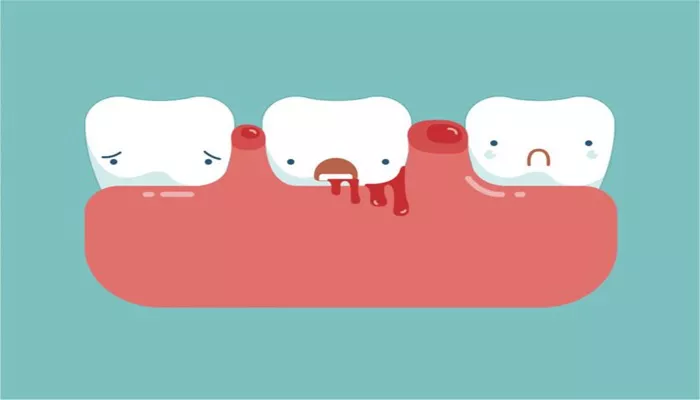Wisdom tooth extraction is a common dental procedure that involves removing the third molars, which often emerge in young adults between the ages of 17 and 21. Due to the limited space in the mouth, these teeth often grow in improperly or become impacted, leading to pain, infection, and other dental problems. During the extraction process, intravenous (IV) injection is frequently used to administer anesthesia and other medications to ensure patient comfort and safety. However, like any medical procedure, IV injection during wisdom tooth extraction carries potential risks and harms. This article aims to provide a detailed and professional perspective on these risks, with a focus on popular science and easy-to-understand explanations.
Understanding Intravenous Injection
Intravenous injection involves inserting a needle into a vein to deliver medications directly into the bloodstream. This method ensures rapid and effective drug delivery, making it particularly useful for anesthesia and pain management during surgical procedures. In the context of wisdom tooth extraction, IV injection is often used to administer local anesthetics, sedatives, and antibiotics. While IV injection is generally safe and effective, it can carry certain risks and complications.
Potential Harms of Intravenous Injection
Bleeding and Hematoma Formation
One of the potential harms of IV injection during wisdom tooth extraction is bleeding and hematoma formation.
Hematomas are localized collections of blood under the skin or in a tissue space, which can occur when a blood vessel is injured during the injection process. This can lead to pain, swelling, and bruising at the injection site. In rare cases, severe bleeding may occur, particularly if the patient has an underlying bleeding disorder or is taking blood-thinning medications.
Infection
IV injection involves breaking the skin barrier, which can increase the risk of infection. Although sterile techniques and disposable needles are used to minimize this risk, infections can still occur. Symptoms of infection at the injection site may include redness, swelling, warmth, and pain. More severe infections can spread to the bloodstream and cause systemic symptoms such as fever, chills, and malaise.
Nerve Damage
The risk of nerve damage is another potential harm associated with IV injection during wisdom tooth extraction. Nerves that control sensation and movement in the arm or hand may be injured if the needle is inserted incorrectly or if the medication irritates the nerve. Symptoms of nerve damage may include numbness, tingling, or pain in the affected area. In most cases, nerve damage is temporary and resolves on its own. However, in rare cases, nerve damage may be permanent.
Allergic Reactions
Patients may experience allergic reactions to the medications administered via IV injection. Common allergens include anesthetics, sedatives, and antibiotics. Symptoms of an allergic reaction may include hives, itching, swelling, difficulty breathing, and anaphylactic shock. Anaphylactic shock is a severe, life-threatening allergic reaction that requires immediate medical attention.
Air Embolism
Air embolism is a rare but potentially fatal complication of IV injection. It occurs when air enters the bloodstream through the needle and travels to the lungs or brain. Symptoms of air embolism may include sudden shortness of breath, chest pain, and loss of consciousness. Immediate medical intervention is required to prevent serious injury or death.
Phlebitis
Phlebitis is inflammation of a vein caused by irritation or injury from the IV needle or medication. Symptoms of phlebitis may include pain, tenderness, redness, and swelling along the vein. In severe cases, phlebitis can lead to blood clot formation and deep vein thrombosis (DVT). DVT is a serious complication that can cause pain, swelling, and even life-threatening complications such as pulmonary embolism.
Minimizing The Risks of Intravenous Injection
To minimize the risks associated with IV injection during wisdom tooth extraction, dentists and other healthcare professionals should follow best practices and sterile techniques. This includes using disposable needles and syringes, cleaning the injection site with antiseptic solutions, and aspirating (drawing back on the syringe) to ensure that the needle is not in a blood vessel or other structure that could be damaged by injection.
Additionally, patients should inform their dentist of any allergies or underlying medical conditions that may increase their risk of complications. This includes bleeding disorders, infections, and allergies to medications commonly used during wisdom tooth extraction. By being informed and proactive, patients can work with their dentist to minimize the risks associated with IV injection during this procedure.
Conclusion
In conclusion, IV injection during wisdom tooth extraction carries potential risks and harms, including bleeding, infection, nerve damage, allergic reactions, air embolism, and phlebitis. However, by following best practices and sterile techniques, and by being informed and proactive, patients can work with their dentist to minimize these risks. Understanding the potential harms of IV injection and taking steps to prevent them can help ensure a safer and more comfortable experience during wisdom tooth extraction.
Related topics:

